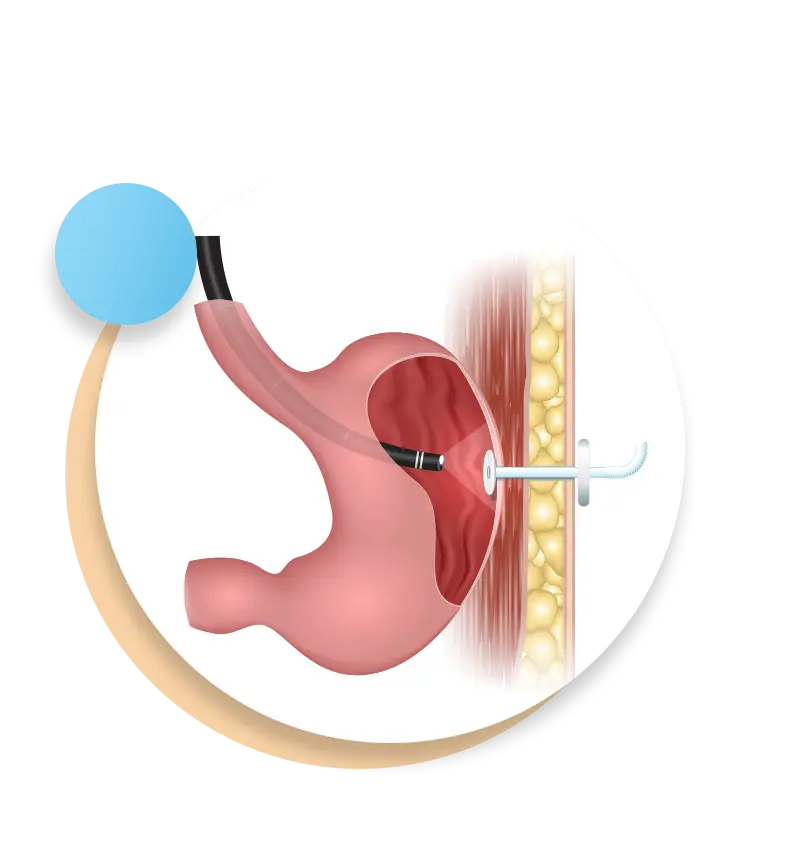PEG (Percutaneous Endoscopic Gastrostomy)
PEG for Digestive Diseases
PEG, or Percutaneous Endoscopic Gastrostomy, is a medical procedure to insert a feeding tube directly into the stomach through the abdominal wall. This procedure is frequently performed on patients encountering difficulties in eating or swallowing due to various medical conditions, including cancer, neurological disorders, or congenital abnormalities.PEG is a valuable intervention for patients requiring long-term nutritional support or those unable to consume food orally. It offers a reliable and efficient means of ensuring adequate nutrition and hydration, improving overall quality of life.
PEG procedure:
Endoscopic Guidance:
The procedure is conducted under endoscopic guidance, allowing the healthcare provider to visualize and access the stomach from within.
Abdominal Insertion:
A small incision is made in the abdominal wall, through which a tube is inserted into the stomach.
Feeding Tube Placement:
Once the tube is in place, it is secured to the abdominal wall to prevent displacement.
Feeding Support:
The feeding tube provides a direct route for nutritional support, allowing essential nutrients to be delivered directly into the stomach.

Discover PEG for
Nourishment and Comfort
If you'd like to learn more about procedures or to
find out if you are a fit candidate or not, please contact us!
Book an Appointmentfind out if you are a fit candidate or not, please contact us!
PEG: Safe and Secure Procedure
From initial consultation to post-procedure follow-up, North Shore Digestive Medicine offers comprehensive support to ensure the best possible outcomes for our patients. We utilize advanced techniques and technologies to perform PEG procedures safely and effectively, helping individuals regain their ability to receive essential nutrition and hydration.Schedule a consultation with North Shore Digestive Medicine today and discover how we can help you achieve optimal health and well-being.
FAQS
PEG procedures are typically recommended for patients with conditions such as cancer, neurological disorders (e.g., stroke, Parkinson's disease), or congenital abnormalities that impair their ability to eat or swallow. These individuals may require long-term nutritional support via a feeding tube.
To ensure the comfort of the patient, the PEG treatment is carried out under sedation or anesthetic. After the procedure, patients may feel some mild discomfort or soreness at the insertion site, although this is usually well handled.
The recovery time varies from patient to patient but mainly depends upon the patient's pre-PEG medical status.
Even though PEG installation is thought to be safe, there are a few risks involved with the process, such as bleeding, infection, leakage surrounding the tube site, and anesthesia-related issues.
Powered by Simple Solutionz
